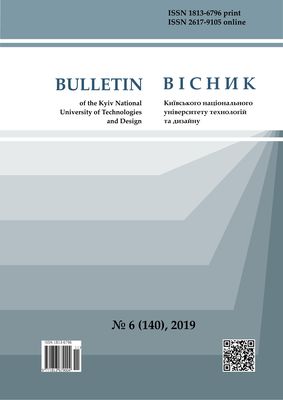Дослідження процесів утворення та накопичення водню сплавами типу AB5 при контактному заряді з цинковим електродом
DOI:
https://doi.org/10.30857/1813-6796.2019.6.12Ключові слова:
електрохімія, отримання водню, зберігання водню, водень-сорбуючі сплавиАнотація
Метою даної роботи було визначення оптимального складу водень-сорбуючого сплаву типу AB5 для ефективного утворення та акумулювання водню при контактному заряді з цинковим анодом. Структуру та фазовий склад сплавів, отриманих аргонно-дуговою плавкою, досліджували рентгенофазовим аналізом. Для проведення електрохімічних досліджень виготовляли композитні електроди із суміші порошку сплаву (d < 40 мкм) та міді (чистотою 99,9%) у співвідношенні 1 до 3. Електрохімічні характеристики досліджували методами вольтамперометрії, хронопотенціо- та хроноамперометрі у стандартній трьохелектродній комірці з Pt (або Zn) протиелектродом та ртутно-оксидним (Hg/HgO) електродом порівняння. Ємність сплавів за воднем досліджували методом гальваностатичного циклювання струмом 100 мА•г-1. Проведений порівняльний аналіз ефективності контактного заряду електродів із водень-сорбуючих сплавів типу AB5 у парі з Zn-анодом. В першу чергу досліджена принципова можливість та ефективність заряду таким способом електроду, виготовленого із вихідного сплаву LaNi5. Показано, що для сплаву LaNi5-xMx ( де М – Сo, Al, Mn) електрохімічні та сорбційні властивості суттєво залежать від природи та вмісту замісника. За результатами досліджень отримано багатокомпонентних сплав MmNi3.6Co0.7Mn0.3Al0.4 та показано, що він володіє гарними властивостями і може бути використаний для контактного отримання водню.
Вперше використано метод контактного заряду (внутрішнього електролізу) для отримання на накопичення водню інтерметалічними сплавами типу AB5. Показана залежність складу сплаву на ефективність такого методу заряду. Запропоновано новий метод отримання і акумулювання водню, що не потребує джерела електричного струму. Такий метод може бути використаний для резервного або аварійного заряду нікель-метал-гідридних акумуляторів. Висока чистота отриманого водню дозволяє використовувати його для паливних елементів або хімічного синтезу.

